John Hurrell – 25 August, 2016
Unsettled stomachs figure a lot in this exhibition. It has a dominant intestinal flavour, from the title down. This could refer to the consumption of art (an enthusiasm or satiation), or art's devouring of collectors as a passion. Or that the artist is preoccupied with a medical problem. (There are visual references to flatulence, bleeding, wheat allergies, and dysentery). The theme is pretty pervasive, and may not be as oblique as initially assumed.
Using stretched linen and acrylic paint, the six paintings here from Tjalling de Vries are really ersatz collages - for despite appearances there is no glued paper anywhere. Just dense paint (that looks like it’s printed newspaper), with nearby, the occasional thin wash over ruled pencil lines. Like Gris or Picasso.
And heaps of raw linen. Everything looks like a partially executed rebus that is halfway built; partially devised, enigmatic clues in some strange word game about naming. The constructing process for making the puzzle is started but (apparently) never completed.
There’s lots of masking tape simulacra, replica ‘strips’ that you initially think the artist has left on by mistake. Or cut around ‘sections’ for making fake comic or cartoon drawings - thick fluid lines and plant shapes with tidy edges. These could be paintings about painting making, rendering via illusion, the temporary accessories involved in the manual processes. The undulating shape edges are an important component in most of these.
One work, the biggest painting, Cleaver’s Edge, shows an unfortunate gentleman doubled over, puking. Is the painting itself a cleaver, and the sickness a desired outcome? (Or the ‘Edge’ a surgeon’s scalpel?) Perhaps the vomiting chappie is a critic elucidating an articulate response. Or is it only a provocatively abrasive image calculated to catch your eye?
Unsettled stomachs figure a lot in this exhibition. It has a dominant intestinal flavour, from the title down. This could refer to the consumption of art (an enthusiasm or even satiation), or art’s devouring of collectors as a passion. Or that the artist is preoccupied with a medical problem. (There are visual references to flatulence, bleeding, wheat allergies, and dysentery). The theme is pretty pervasive, and may not be as oblique as initially assumed.
The images of stomach and viscera, rendered in black outline, whatever their significance to the artist, are highly ambiguous. No Guts No Glory could be presenting a fallen man with a helmet on his head and a knapsack on his back. Can’t Stomach might be a colourful bird sitting on a branch looking at a leaf. The unravelled, vertically descending gut of Can’t Swallow could be the long stem of a flower.
The flatness of the paint (no tonal modulation) is what gives these images the same kind of doubled layer of meaning that maps are prone to, and de Vries plays on this knowingly by including maps in Blood Lost: six small topographical details. The set of small rectangles is like a wink aimed at reminding you: the Patrick Caulfield/Michael Craig Martin-esque contours of the wobbly viscera in the show have parallels with cartographical coastlines.
There lies the layered fascination of this show: the rebuslike mind games (like those of Oscar Enberg); the map/guts interchangeability; the possible meaning of scary symptoms that vacillate between private and public; the other less sinister, even humerous, readings of the imagery. No guts no glory is a club sandwich of interpretative possibilities.
John Hurrell
Recent Comments
Roger Boyce
I reckon this painter's latest bodies of work to be some of the toughest painting going in New Zealand at ...
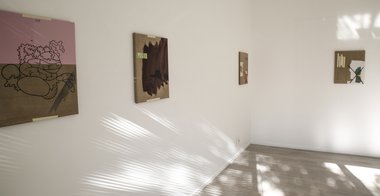
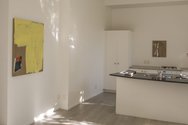
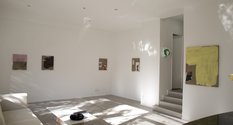
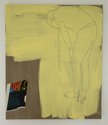
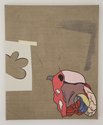
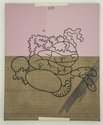
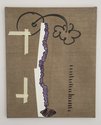
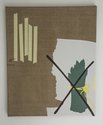
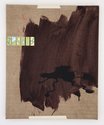
 Advertising in this column
Advertising in this column Two Rooms presents a program of residencies and projects
Two Rooms presents a program of residencies and projects



This Discussion has 1 comment.
Comment
Roger Boyce, 11:25 a.m. 28 August, 2016 #
I reckon this painter's latest bodies of work to be some of the toughest painting going in New Zealand at present.
That's all I have to offer on the matter - and given the squalid interpersonal history of my attempted contributions to these threads, I won't be entertaining rejoinders, however pedantic or provocative.
Be Well Y'all.
Participate
Register to Participate.
Sign in
Sign in to an existing account.